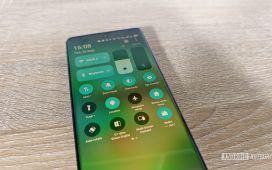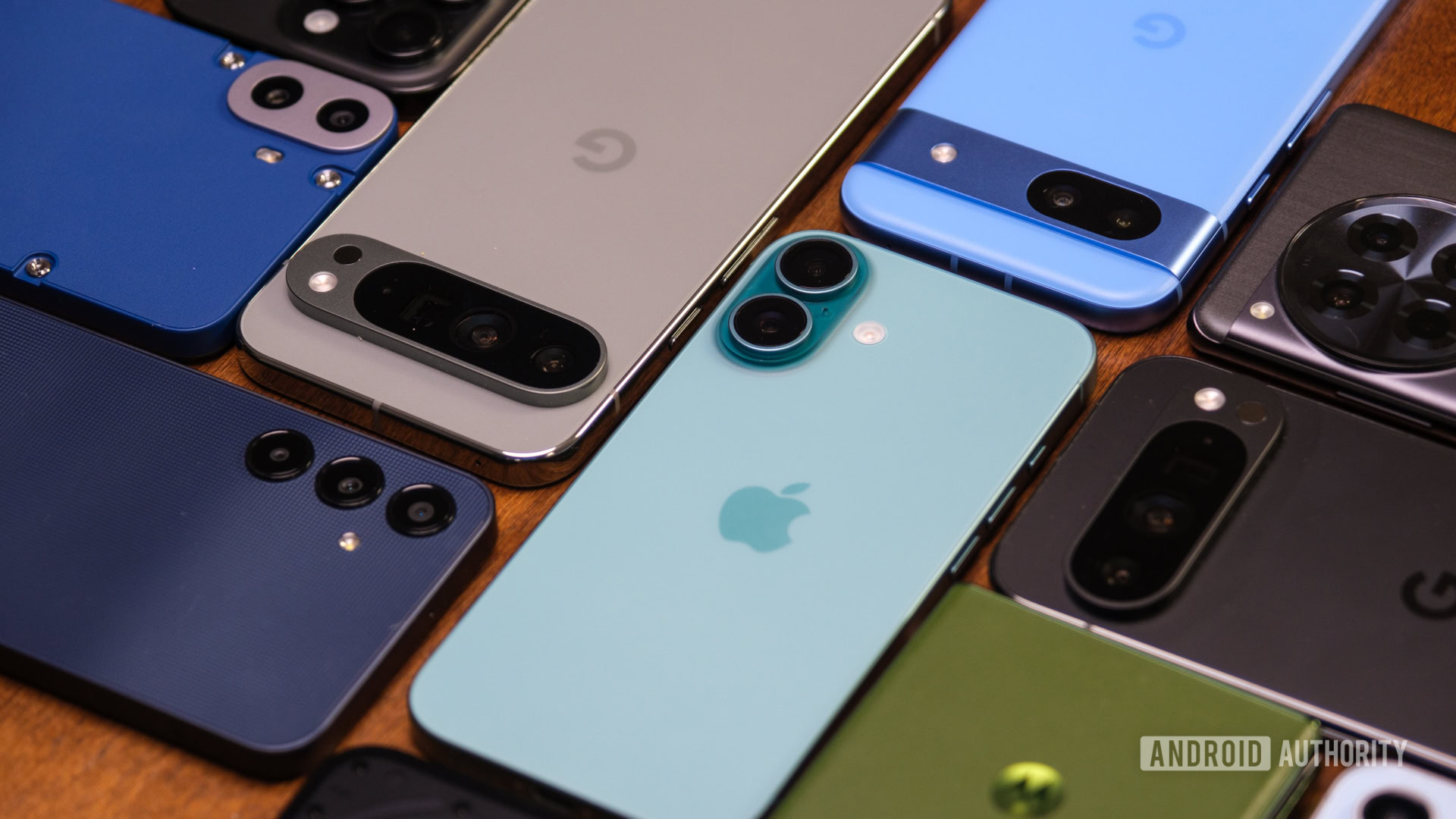
Ryan Haines / Android Authority
In the tenth episode of the fifth season of The Simpsons, Mr. Burns opens a casino and starts to lose his mind, becoming a parody of Howard Hughes’ mental deterioration. At one point, he has a tiny model of a plane that he’s named “Spruce Moose,” and he wants to fly it with Smithers. Of course, Smithers says the plane is only a toy, so they can’t get into it, much less fly it. Mr. Burns, deadly serious, pulls a gun on Smithers and says, “Hop. In.” Smithers, bewildered, stares at Mr. Burns, not knowing what to do.
I can imagine the CEOs of companies that make the world’s smartphones feel a lot like Smithers right now, with President Donald Trump playing the part of Mr. Burns.
Yesterday, according to Bloomberg, President Trump announced that he would impose sweeping tariffs on smartphone manufacturers to encourage them to make phones in the United States. First, in a social media post earlier on Friday, he said these tariffs would apply specifically to Apple at a rate of 25%. However, during a White House briefing later, he said similar tariffs would also apply to other manufacturers, calling out Samsung specifically. Of course, Samsung is not an American company, so we’re not sure why it would ever need to make phones here.
Regardless, as has become customary when Trump discusses tariffs, he didn’t outline a concrete plan or commit to a specific timeline. Trump said the import levies would be “appropriately done” and “ready” by the end of June. That’s all we have to go on.
The problem here is that what President Trump seems to want is impossible. Apple, Samsung, Google, and all other smartphone manufacturers simply cannot make a phone in the USA. It is almost as impossible as hopping into a toy plane for a ride to the Belgian Congo in 17 minutes.
Making Android phones in the USA is impossible
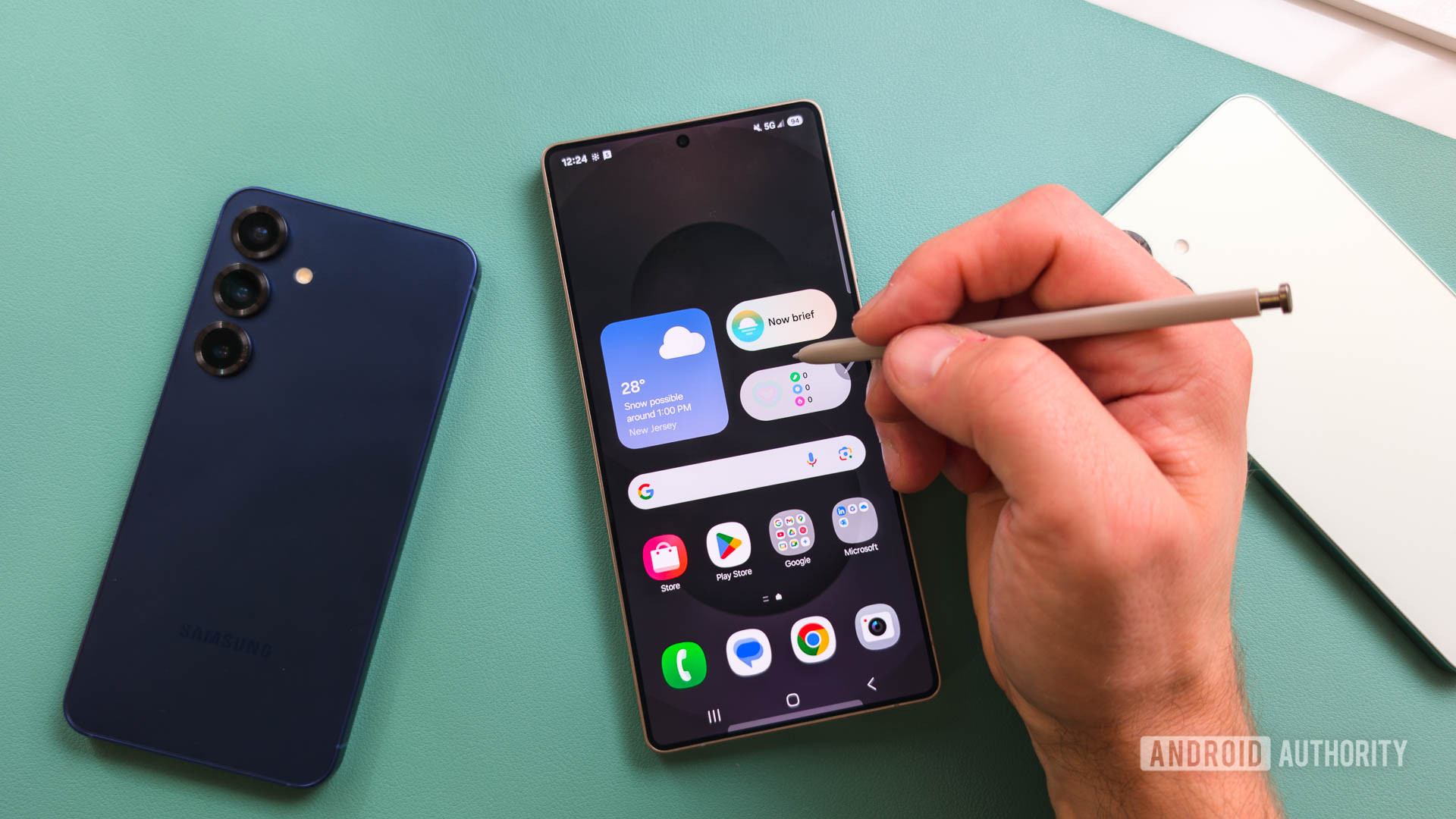
C. Scott Brown / Android Authority
Any manufacturer would face three nearly insurmountable problems in making a phone in the United States. The first and most significant one is infrastructure. The factories that one would need to create all the aspects of a smartphone — displays, silicon, batteries, camera sensors, etc. — simply don’t exist in the US. For any company to even begin with an attempt at making phones here, it would need to spend billions (or possibly trillions) just creating the infrastructure to do so — and it would take a decade or more to complete.
Second, this company would need highly skilled people to operate those factories. The United States does not have any of these people, so they would need to be found and trained, which would cost a ton of money and also take years. Even if the company tried to skirt this problem by pulling people in from other countries who already know what to do, those workers would need to be paid enough money to live in the United States, which would be expensive. Also, those people would be immigrants, which we already know Trump doesn’t like.
The United States lacks the infrastructure, labor, and materials needed to make phones. They simply aren’t here.
If, somehow, a company surmounted these issues — which, remember, would be practically impossible — a lack of materials would still limit it. Certain rare earth metals needed to make smartphone components are not commonly found in the US. Scandium (Sc), for example, is used in alloys when creating batteries, and the last time the US produced it was 50 years ago. Even if, by some miracle, you found all the rare earth minerals needed for a phone here in the US, you would then need to build refinement plants to process those minerals and, of course, hire people to do the labor.
Finally, a company that figured out a way to pull all that off would ultimately be left with a phone that would need to cost tens of thousands of dollars to earn enough profit to pay off the initial investments. This phone also would, for all intents and purposes, be a “first-gen” device, since all the supply chain elements would be brand new. I don’t know about you, but I don’t want a $10,000 smartphone that isn’t as good as a $300 one I can buy right now.
But what about a phone ‘mostly’ made in the US?
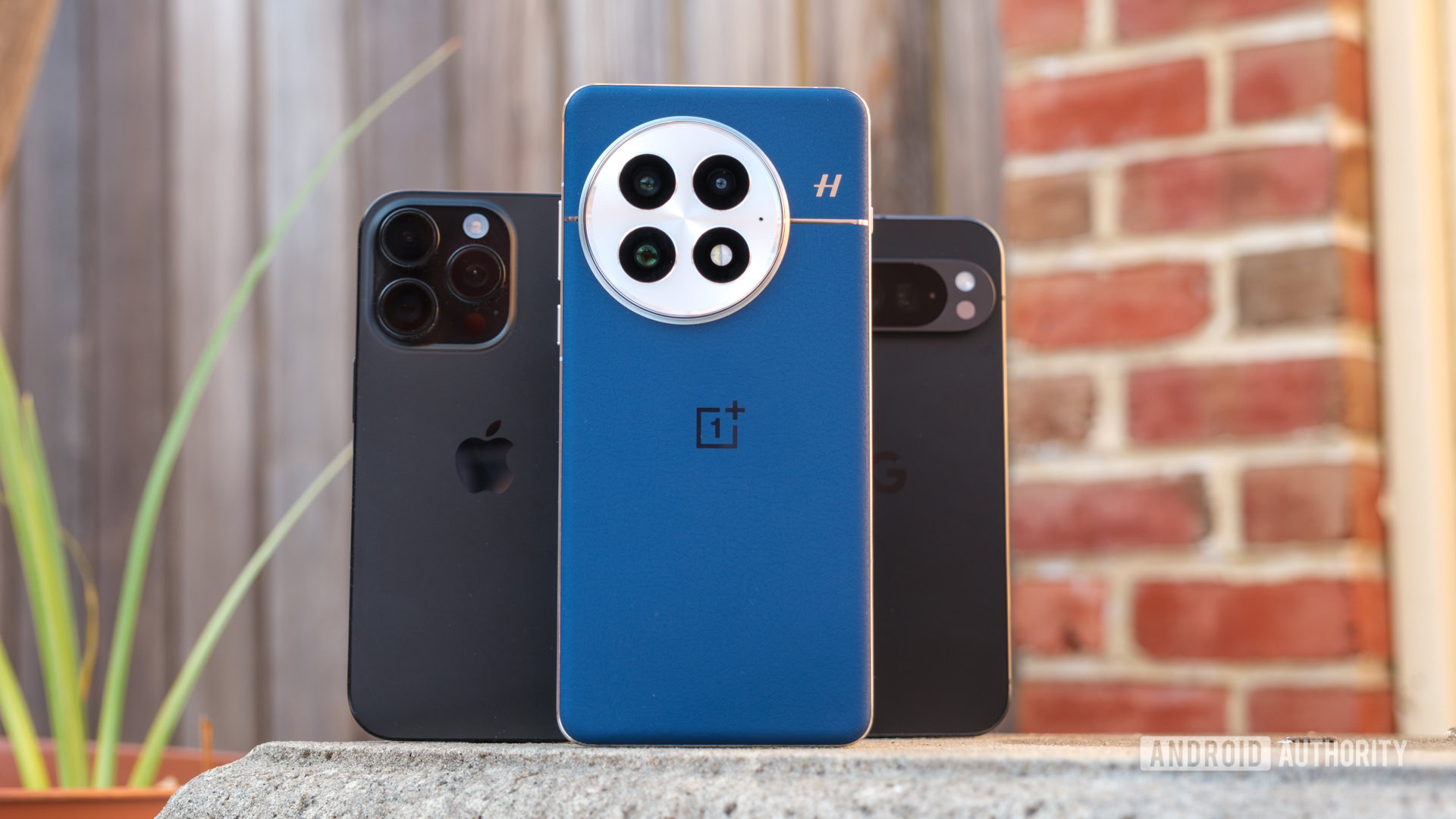
Ryan Haines / Android Authority
On Tuesday this past week, Trump chatted with Apple CEO Tim Cook. During this discussion, Cook allegedly told Trump about Apple’s plans to divest much of its current manufacturing in China to India instead. Trump, unimpressed, told Cook to stop building plants in India and instead pivot away from China to domestic production.
“I had a little problem with Tim Cook yesterday,” Trump said of the conversation. “He is building all over India. I don’t want [him] building in India.” Trump also did not seem impressed by Apple’s commitment to invest an astounding $500 billion in the US over the next four years. That investment would include a new server manufacturing facility in Houston, among other assets.
This information strongly suggests that President Trump wants an all-or-nothing solution. He seems to think that moving smartphone production to the United States is not only possible but can easily be done — by June this year, it would seem.
Even if smartphone makers shifted a little more production to the US, that would cause the phones to skyrocket in price.
Let me play devil’s advocate, though. Let’s assume that Trump is just playing hardball here, and secretly would be OK with a smartphone that’s mostly made in the USA. This is a completely plausible thing to do, but it would inevitably increase the consumer cost of a phone exponentially. China is so good at making smartphone components and can do it for far less money than nearly any other country. Every component that is not made in China and instead made here would increase the cost of that component to an alarming degree. This would force the smartphone company to pass that increased cost onto you and me, the consumer.
I don’t know the numbers here, because I don’t work in the smartphone manufacturing industry, but it wouldn’t surprise me if the cost of doing this would actually exceed the cost of Trump’s proposed 25% tariffs. In that case, it would actually be better for companies to increase the cost of phones in response to the tariffs and change nothing else.
How will smartphone makers respond?
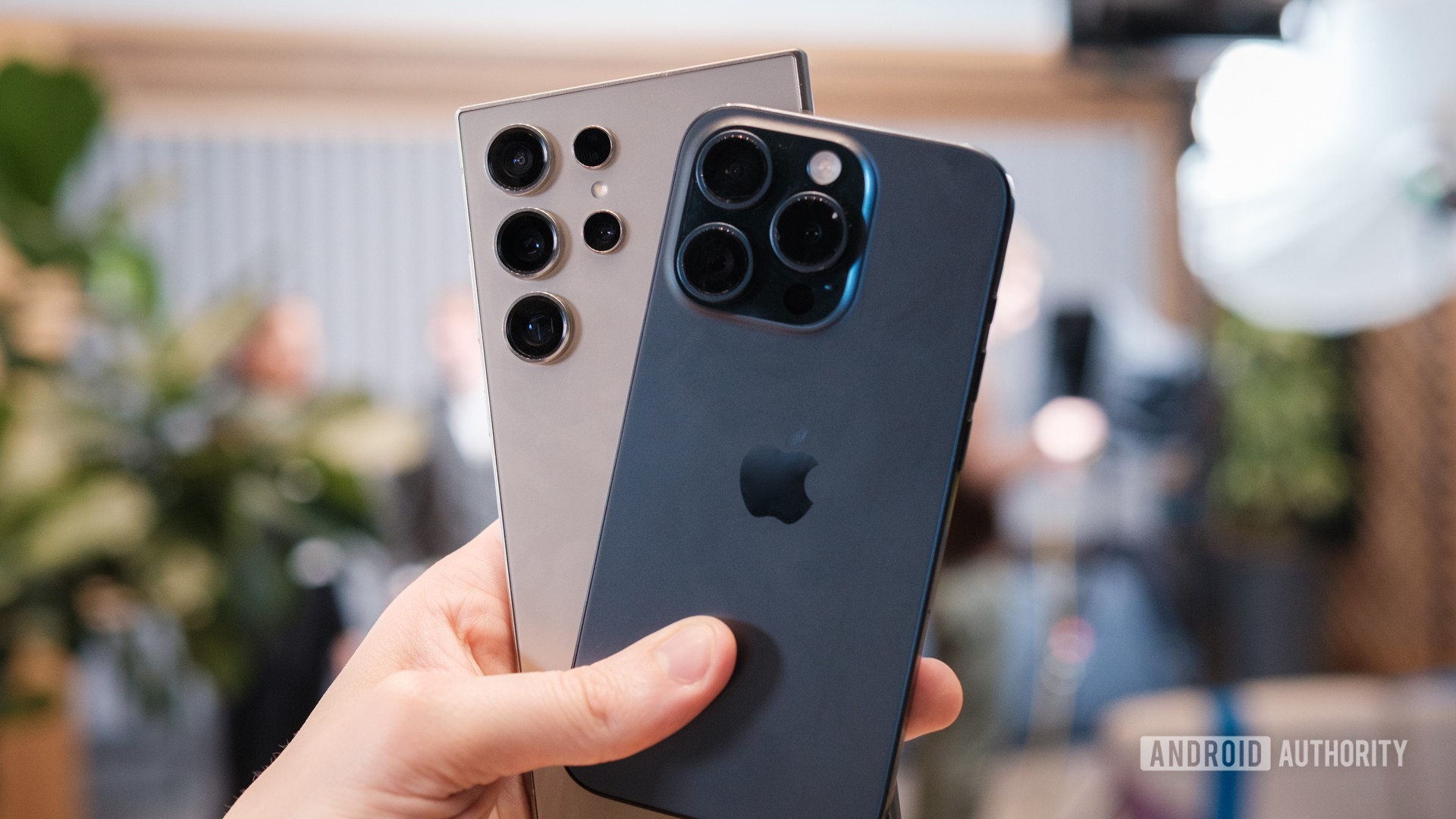
Robert Triggs / Android Authority
OK, so we know that Trump wants smartphones to be made in the US. We also know that a phone 100% made in the US would be practically impossible. Also, any significant shift from the status quo to a smartphone with more US involvement would make the phone much more expensive. So, what will the companies do?
Honestly, I don’t know. They are stuck just like Smithers, needing to figure out how they could squish into the Spruce Moose. I’m sure they have tried to explain this to Trump. Tim Cook is very intelligent, so I am sure he came well-prepared for his conversation with Trump, with information about why a “Made in USA” iPhone is an insurmountable problem. Clearly, though, that’s had no effect on Trump’s conviction to get it done.
What Trump seems to want is impossible, and even a middle ground solution would be untenable. The best solution could be to take the tariffs and make phones be 25% more expensive.
The only way out that I can see is for the companies to take the tariff hit. Apple, Samsung, and all other manufacturers who plan to sell phones here will need to factor in a 25% price hike to cover the increased production costs. That will, of course, mean consumers will need to spend a lot more on phones than they have in the past. Just to give you an idea of what that means, the iPhone 16 and Galaxy S25 both start at $799, and a 25% increase would push them to $999. That is a significant change.
We’ll see how this shakes out in the coming weeks and months. One thing’s for sure, though: Trump’s dream of a smartphone made in the USA is not coming.

